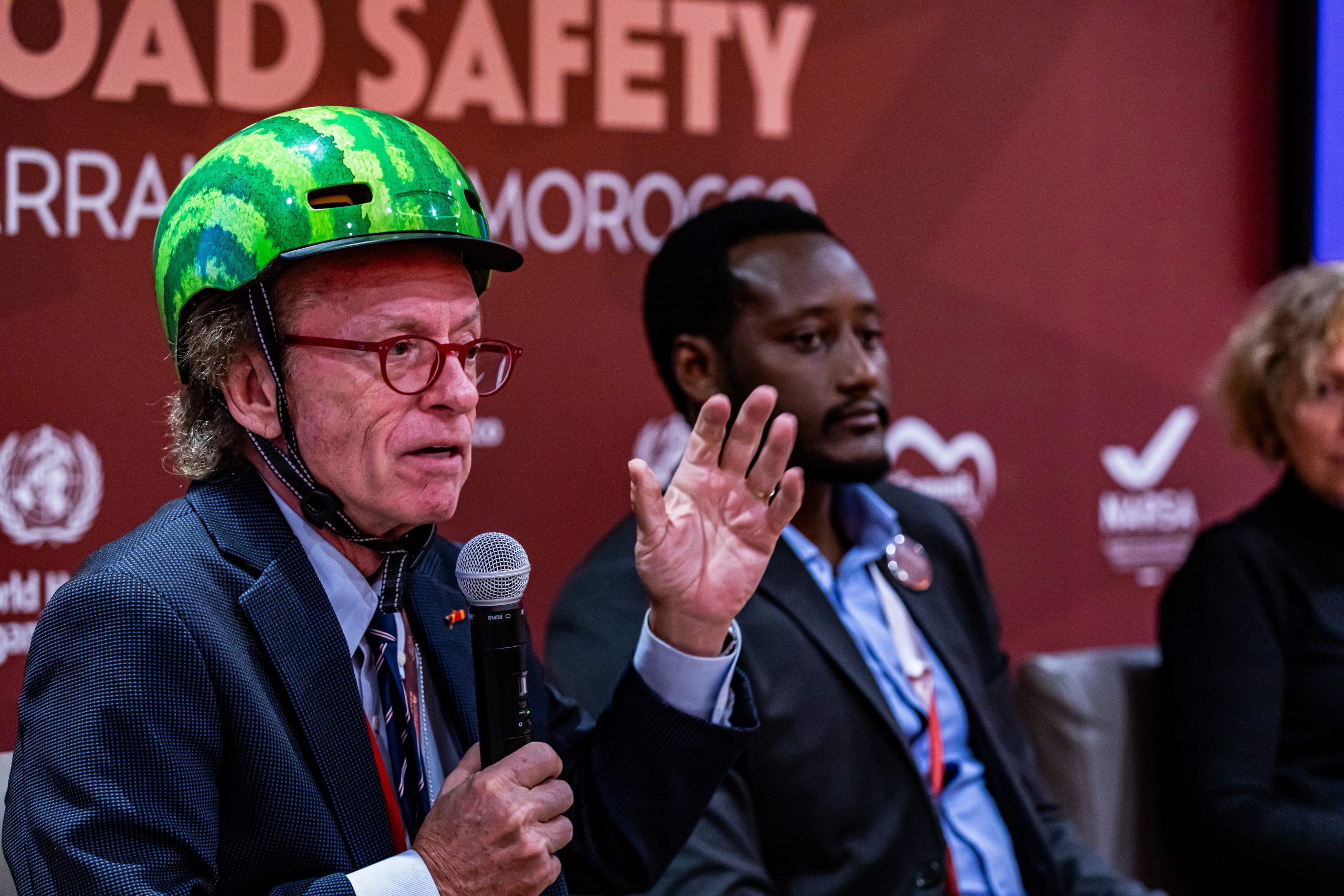
In June 2024, the Vietnamese National Assembly passed a new landmark Law on Road Traffic Order and Safety. It included actions to address five key risk factors (drink-driving, speeding, helmets, seat belts, and child car seats) targeted by Alliance member AIP Foundation and its advocacy partners, the Global Road Safety Partnership (GRSP) and the Global Health Advocacy Incubator (GHAI). Global evidence and national government data showed that these five factors had the most significant impact on crashes in Vietnam; therefore, targeting them had the most potential for reducing road deaths in the country.
AIP Foundation and its partners were able to influence the law by mapping key stakeholders and creating a working group with the National Traffic Safety Committee (NTSC), and including government officials from the Ministry of Health, the People’s Representative Newspaper, the Hanoi University of Public Health, WHO, local NGOs, and others. While it is not possible for AIP Foundation to work directly with the lawmakers, the working group supported its partners in advocating for key interventions to be included in the law. The working group members brought expertise and research to working group meetings to help formulate recommendations, which fed into the drafting of the law and were taken to the National Assembly through the NTSC. They organized technical capacity-building workshops for ministry officials, members of the NTSC, and the law-drafting committee. These workshops were designed to provide scientific evidence and international best practices that would inform recommendations. Additionally, they organized journalist training and public awareness campaigns in preparation for the law coming into force.
The law, when it passed, contained sweeping new legislation to protect children through the use of child restraint systems and limits on who can use the front seat. Among other things, it also stated that drivers and passengers on motorbikes must wear helmets in accordance with national technical regulations and fasten the straps properly. Previously, enforcement had focused on making sure people wore a helmet. The new law placed greater emphasis on ensuring that the helmets riders wear are safe ones. The Vietnamese government cemented its commitment at the 4th Global Ministerial Conference on Road Safety, setting a target to increase the proportion of standard helmets used to 100% by 2030.
A new decree, coming into force in January 2025 on the back of the new law, increased fines and driver licence point penalties for drivers or passengers not wearing a helmet or not having it correctly fastened. However, enforcing the standard of a helmet is much harder, says Phong Le, AIP Foundation’s Country Manager for Vietnam. It is difficult to challenge riders about the quality of their helmet, as it’s not always easy for the police themselves to be sure a helmet is nonstandard unless it is obviously so, for example, a construction helmet. “They cannot enforce helmet standards, just by looking at people wearing helmets as they move about the streets [on their bike].” Phong tells us that the government is looking at using cameras and AI-technology to detect nonstandard helmets, but this will take time to achieve.
Phong says that fake helmets are readily available at street stalls, and when challenged by police or market management authority, many vendors will simply say they are selling caps —not meant to be used as safety devices. A 2020 decree has already increased fines for manufacturers of counterfeit goods, including nonstandard helmets, but the issue persists. Responsibility for controlling and enforcing the production and trade of nonstandard helmets is under the authority of the Markets and Management Authority, making it harder for the traffic police to enforce. “Things like that require a higher coordination level from the government,” says Phong.
We ask Phong how AIP Foundation is helping the government and police to eliminate unsafe helmets following the new law. He explains that the NGO’s strategy is multi-fold. “We share research results, scientific evidence, and international best practices with various government agencies, including traffic police; organize information sessions, capacity building workshops for journalists, as well as run public awareness campaigns.”
The organization also has a long history of community advocacy that is helping them to promote the new law. In recent years, its partnerships with Prudential Vietnam and Prudence Foundation and Johnson & Johnson have handed out almost 100,000 standard helmets to school children. The impact and reach of the helmet handovers are much greater than just helmets on heads, however. “It’s always strategic—we are not just delivering helmets,” says Phong. He goes on to describe the short songs and routines that they use to communicate basic helmet safety messages to the students: “Three basic steps for wearing a helmet properly and to always use a standard helmet.” There is a strong community focus in the helmet work with schools, Victoria Jönsson-Brown, AIP Foundation’s Communications Manager, explains. “It’s not just students, it’s also parents, and teachers, and school principals, and everybody who’s part of the school community.” It’s also an opportunity to influence community perspectives about safe helmets so that they will choose a standard helmet for themselves and their families, not just to avoid a fine, but because it will protect them.
The helmet program dovetails with AIP Foundation’s other work, including its safe school zones project, advocating for slower, safer school streets, and its work promoting child restraint systems, which before the new law, were used in just 1.3% of cars. Just like its advocacy for the Law on Road Traffic Order and Safety, at its core are children and their journeys to school, whether by motorbike, car, bus, foot, or cycle.